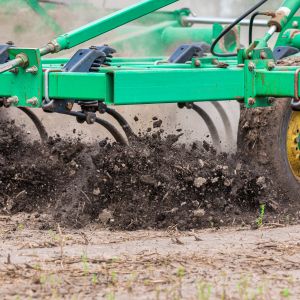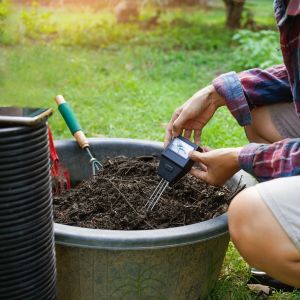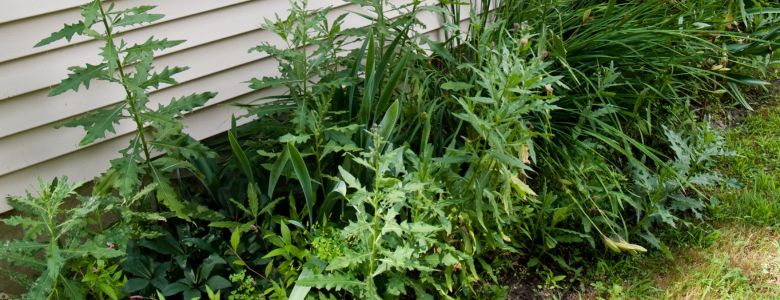Weeds are the persistent guests in every garden, revealing valuable insights about the condition of your soil. They thrive in disturbed soil, and their presence can provide a snapshot of the real-time growing conditions. While weed analysis can’t replace soil tests, it can offer valuable information about your landscape. Let’s explore common landscaping scenarios and the weeds that thrive in them.
Compacted Soil – A Cry for Space

Compacted soil, often caused by heavy traffic or machinery, becomes an ideal breeding ground for certain weeds. Notably, in Orchard Park, Western New York, you may encounter stubborn weeds like plantain, dock, chicory, dandelion, and chickweed. These tenacious plants boast robust root systems that can penetrate the compacted soil. For Orchard Park, NY, and its neighboring areas, addressing compacted soil is essential for a thriving landscape.
Wet or Poorly Drained Soil – Too Much Moisture
Areas with constant moisture or drainage problems are prone to waterlogged soils. Orchard Park, East Aurora, Hamburg, and other parts of Western New York may face this issue. In consistently moist lawns, you might encounter the persistent yellow nutsedge. Other water-loving weeds include spotted ladybug, smart grass, ground creeper, violets, mosses, chickweed, and sorrel. Proper drainage solutions are crucial in these regions to combat the soggy soil issue. Learn more about solutions for soggy soil.
Acidic Soil – Unfavorable pH Levels

Soil pH can influence the growth of various plants. In Orchard Park, where the soil can be slightly acidic, you may find weeds like sorrel, plantain, spotted ladybug, yellow oxalis, moss, and mullein. Proper gardening practices can help mitigate acidity and create an environment conducive to thriving plants.
Alkali Soils – A Hostile Environment
In areas with highly alkaline soils (pH over 8.5), such as parts of Western New York, specific plant species struggle to thrive. Weeds like Virginia peppergrass, goosefoot, bladder campion, scarlet pimpernel, and burdock are better suited to these conditions. Gardeners in such regions may need to employ specialized strategies to maintain a healthy landscape. Learn how to grow a beautiful garden in alkaline soil.
Hardpan and Firm Soil – A Solid Challenge
Hardpan, a dense layer of soil beneath the surface, can obstruct drainage and root penetration. In this challenging environment, you may find mustard, disc mayweed, science wort, horse nettle, and quack grass. These resilient perennial weeds spread through underground rhizomes and can make gardening difficult. Addressing hardpan and firm soil is vital for creating a healthy garden.
Dry Soil – A Thirsty Landscape
Excessively dry soil, caused by factors like drought or limited moisture, can encourage the growth of weeds such as common sheep sorrel, black medic, prostate pigweed, common yarrow, mullein, common gypsy, and clover. Solutions for dry sandy soils can help ensure a vibrant garden. Discover gardening solutions for dry sandy soils.
Poor Soil – A Nutritional Deficit
Low-fertility soils, often due to leaching or nutrient overuse, lack essential nutrients for plant growth. These soils may harbor clover and other legumes due to their nitrogen-fixing ability. Additionally, sorrel, plantain, mullein, and mug wort are common in nutrient-deficient soils. Addressing these deficiencies is crucial for a flourishing landscape.
Good, Fertile Soil – An Opportunity for Growth
Weeds like chickweed, chicory, cypress, goosefoot, pigweed, yellow oxalis, and burdock can indicate fertile soil. Areas with a proliferation of these plants are ideal for new vegetable gardens.
Armed with knowledge about your soil’s conditions, you can take steps to create a healthier landscape. Adjusting conditions, improving drainage, optimizing soil pH and fertility, and selecting suitable plant species can help you tackle weed problems effectively.
Before making significant changes, consider a soil test to determine your soil’s condition and treatment needs. Work with the existing soil type, plant appropriate species, and address any issues to achieve the garden of your dreams.
Learn more about landscaping and gardening solutions and enhance your landscape’s health and beauty.

